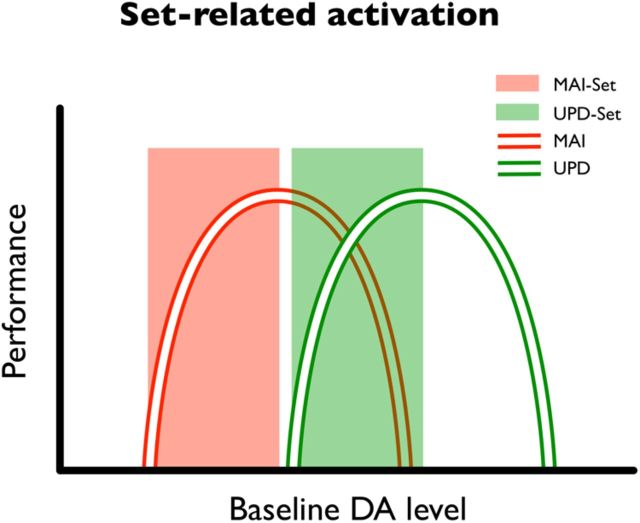Figure 6.
A schematic illustrating “dose–performance” functions under different anticipatory sets: the two curves indicate that the relationship between baseline dopamine level and behavioral performance may have an inverted-U shape. They also show that there is an optimal range in which an increase of dopamine level would improve performance. Crucially, the position of the curve may vary depending on the cognitive operation (e.g., maintenance or updating, as red and green curve, respectively). The anticipatory optimization (i.e., set) may help defining the range of baseline dopamine (represented as shaded areas), thereby optimizing performance for anticipated outcomes. This nonlinear relationship may partly account for our observation of positive correlations (between set activity and accuracy) and differential set-related activation in the midbrain. Here, we depict a possible mechanism that appeals to the notion that different behaviors (e.g., updating and maintenance) implicate different brain systems, in which optimal dopamine range is system-dependent. If set-related activity during maintenance and updating fell under the rising parts of the curves (as illustrated by the red and green box), one would expect a positive correlation, as reported in the main text. At the between-subject level, set-related modulation of dopamine could change performance in a way that depends upon subject-specific baseline dopamine levels (compare the “law of initial value”; for review, see Cools et al., 2011).

